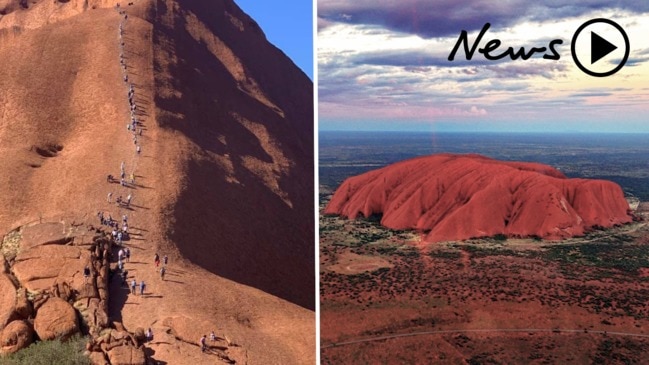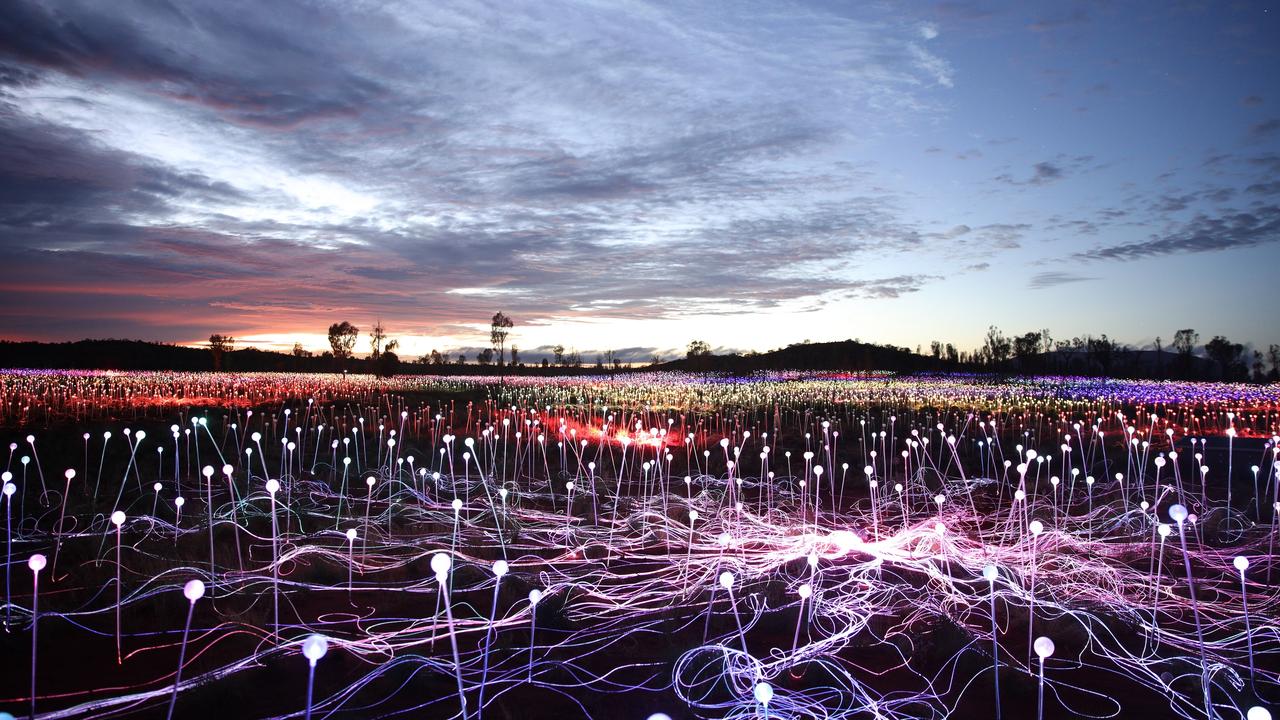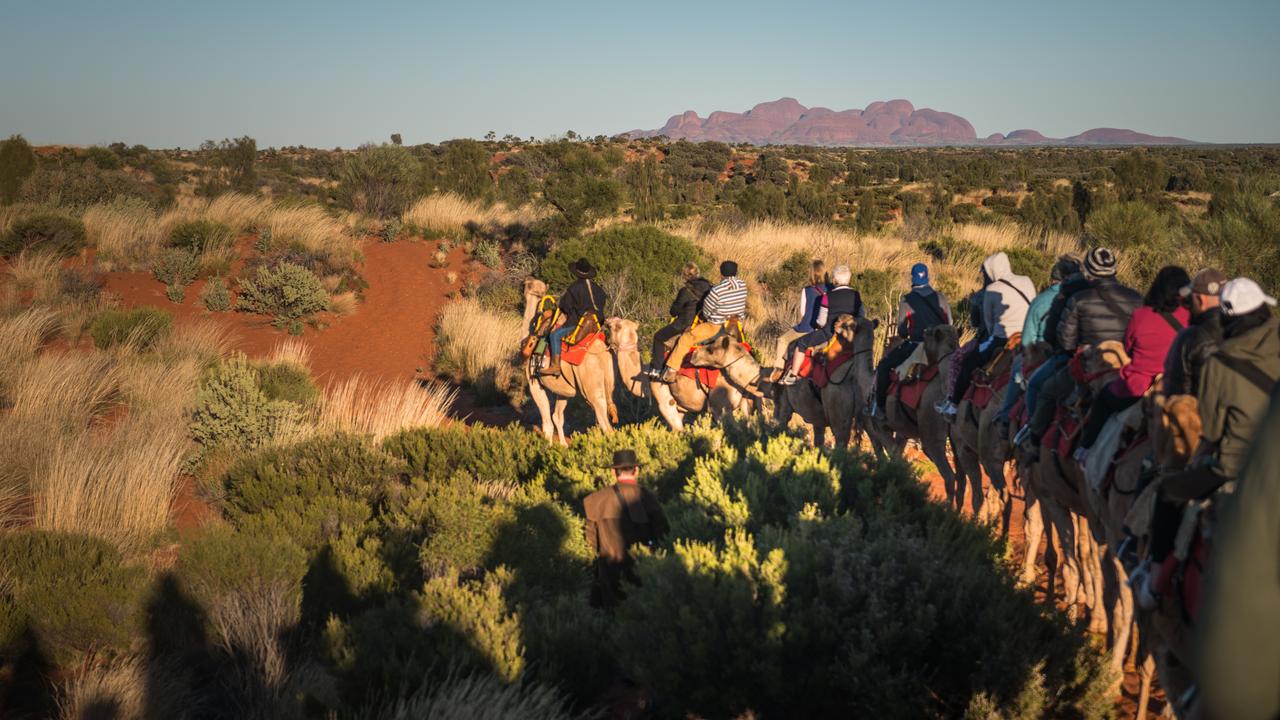Must-do experiences in the Red Centre
With the closure of the Uluru climb on Saturday, here’s what else you can experience and the places to stay in the Northern Territory.

On Saturday, October 26 — 34 years to the day since the Anangu people received the land rights for Uluru and Kata Tjuta — the Uluru climb will close for good.
The ban, following a vote by the Uluru-Kata Tjuta National Park board in 2017, cites Uluru’s cultural significance to the Anangu people — including Tjukurpa, the word for their beliefs and laws — as outweighing economic considerations.
While tourists have rushed to Uluru before climbing is banned, the controversial decision has prompted warnings that tourism at the nation’s most famous landmark faces an uncertain future.
But the rock, Central Land Council Sammy Wilson once said, is “not a theme park like Disneyland”.
Uluru can now become a better tourist destination and set a new direction for the park, said the park’s general manager Michael Miss, such as providing fulfilling cultural and natural experiences that will give visitors a deeper understanding of its history and benefit the Anangu people.
“For every tourist destination, you have to reinvent yourself. If you just offer the same, people go elsewhere,” he said.
Chief executive at Voyages Indigenous Tourism Australia Greg Hunt said there was far more to Uluru than the climb, and predictions of a significant decline were wrong.
There are more than 100 tours and experiences, he said — from riding a mountain bike, segway or walking around Uluru’s 10km base to Aboriginal cultural tours, helicopters and skydiving.
Here are some of the best experiences tourists can enjoy at Uluru.
PARTICIPATE IN THE AUSTRALIAN OUTBACK MARATHON

The marathon has long been a favourite event for people with all levels of fitness each July. With spectacular views of Uluru and Kata Tjuta in the background and hosted by Ayers Rock Resort, it’s a once in a lifetime experience — whether you’re a professional runner or just a beginner.
Next year’s race will be held on July 25.
RELATED: Tourists’ big question about Uluru ban
RELATED: You shouldn’t climb this sacred monolith
HEAD TO TALINGURU NYAKUNYTJAKU TO WATCH THE SUNRISE

For an exhilarating sunrise viewing of both Uluru and Kata Tjuta, head to this viewing site. Talinguru Nyakunytjaku means “place to look from the sand dune” — and as the sun rises, the Rock comes to life as light and shade dance across the ripples of its surface.
Afterwards, take a walk along its raised tracks to see an interpretation of Aboriginal stories.
TAKE A SCENIC FLIGHT

Take to the sky and soar over Uluru and Kata Tjuta in a helicopter or plane. An aerial view — best at sunrise or sunset — allows you to appreciate the immense size and presence of these monolithic icons. For an even deeper look at the area from above, take a full-day charter incorporating flights over Kings Canyon.
SPEND A NIGHT AT FIELD OF LIGHT

With magnificent views of Uluru at sunset, this three-course bush tucker menu is combined with the Bruce Munro’s critically-acclaimed Field of Light art installation.
The exhibition — aptly named Tilli Wiru Tjuta Nyakutjaku or “looking at lots of beautiful lights” in local Pitjanttjatjara — features 50,000 spindles of light, illuminating in ochre, violet, blue and white.
And as the sky darkens, visitors can settle in and listen to the resident star talker decode the southern night sky.
TAKE A LEAP WITH A SUNSET TANDEM SKYDIVE

For the best bird’s eye view of Uluru, take the leap out of an aircraft at 12,000 feet above it.
Enjoy a thrilling free fall before your parachute deploys, when you can watch the changing colours of Uluru, with views of Kata Tjuta, Mount Connor and Lake Amadeus.
All skydives are done in tandem with experienced instructors, and visitors should allow up to six hours to complete the jump.
RIDE A CAMEL

Take a trip across the landscape aboard a “ship of the desert”. Whether at sunrise or sunset, Uluru Camel Tours’ camels are fitted with custom-made saddles, and your cameleer will describe the flora and fauna of the outback landscape as you go.
WALK THE BASE

While you can no longer climb up Uluru, you can experience its scale from the 10-kilometre base loop, stopping along the way to enjoy ancestral stories, pause at waterholes, acknowledge sacred sites and peer up at the rock’s face.
Free ranger-guided walks along a section of the walk called the Mala Track are also available, incorporating commentary about the park’s geology and natural environment, demonstrations of traditional Anangu tools and tales of the creation stories known as Tjukurpa.
SEGWAY

With stops along the way to learn about rock art, sacred sites and the flora and fauna proliferating around Uluru, segway tours are open to guests aged 12 and over and can be enjoyed at sunrise or sunset after a short training session.
CYCLE

Take a morning ride around the base of Uluru by bicycle.
Either bring your own or hire one from Outback Cycling’s mobile bike shop at the Uluru-Kata Tjuta Cultural Centre, and embark on the 15 kilometre self-guided journey to Uluru and around the loop encircling it at your own pace.
LEARN ABOUT THE ANCIENT ANCESTORS ON THE MALA WALK

Visit ancient campsites, learn about ceremonies and rites of passage, and discover how Anangu lived daily life on this guided walk to Kantju Gorge.
Enter the caves where the Mala people camped when they first arrived at Uluru, visit the kitchen cave where they prepared their meals and admire the fine examples of rock art along the walk.
EXPLORE KATA TJUTA

Formerly known as the Olgas, this formation of 36 bald domes is located 40km west of Uluru, and is sacred under Anangu men’s law.
Visitors can observe it from a viewing platform, on walks through Walpa Gorge and hikes through the Valley of the Winds — or from above on a scenic helicopter flight.
WHERE TO STAY

Only 20km from Uluru, Ayers Rock Resort — owned by Voyages Indigenous Tourism Australia — provides a suite of complimentary Indigenous activities for guests and a variety of accommodation options, including:
• The centrally-located Desert Gardens Hotel, it’s the only venue in Ayers Rock Resort with rooms that view Uluru.
• The Lost Camel, located in the heart of Ayers Rock Resort and only 20 minutes from Uluru.
• Ayers Rock Campground, which offers everything from airconditioned cabins to powered camp sites for caravans, to places where visitors can simply pitch their tents. The campground is located 15km from Uluru.
• Longitude 131° offers an exclusive experience of the Australian outback, offering views of both Uluru and Kata Tjuta.
— With AAP



